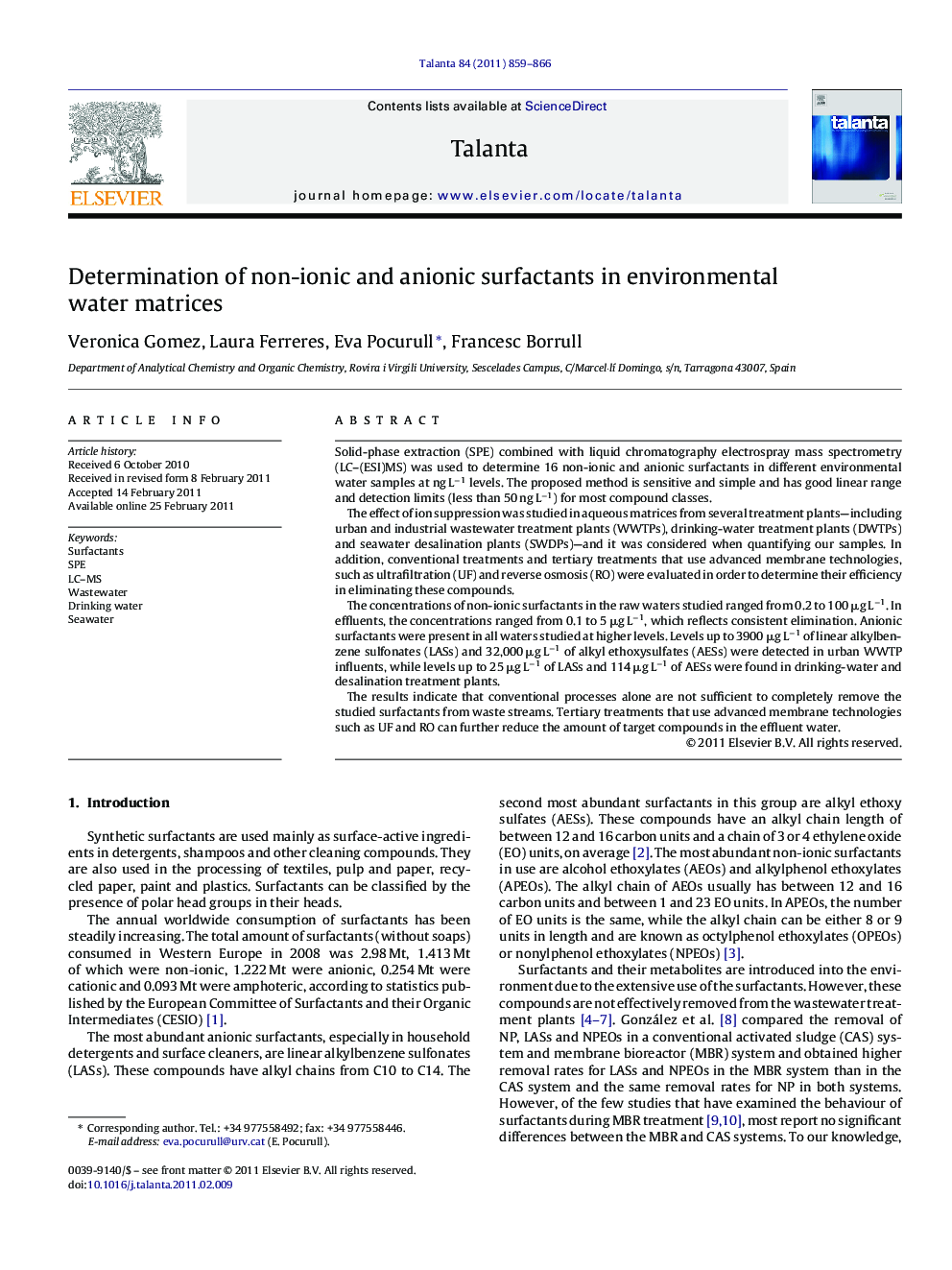| Article ID | Journal | Published Year | Pages | File Type |
|---|---|---|---|---|
| 1244182 | Talanta | 2011 | 8 Pages |
Solid-phase extraction (SPE) combined with liquid chromatography electrospray mass spectrometry (LC–(ESI)MS) was used to determine 16 non-ionic and anionic surfactants in different environmental water samples at ng L−1 levels. The proposed method is sensitive and simple and has good linear range and detection limits (less than 50 ng L−1) for most compound classes.The effect of ion suppression was studied in aqueous matrices from several treatment plants—including urban and industrial wastewater treatment plants (WWTPs), drinking-water treatment plants (DWTPs) and seawater desalination plants (SWDPs)—and it was considered when quantifying our samples. In addition, conventional treatments and tertiary treatments that use advanced membrane technologies, such as ultrafiltration (UF) and reverse osmosis (RO) were evaluated in order to determine their efficiency in eliminating these compounds.The concentrations of non-ionic surfactants in the raw waters studied ranged from 0.2 to 100 μg L−1. In effluents, the concentrations ranged from 0.1 to 5 μg L−1, which reflects consistent elimination. Anionic surfactants were present in all waters studied at higher levels. Levels up to 3900 μg L−1 of linear alkylbenzene sulfonates (LASs) and 32,000 μg L−1 of alkyl ethoxysulfates (AESs) were detected in urban WWTP influents, while levels up to 25 μg L−1 of LASs and 114 μg L−1 of AESs were found in drinking-water and desalination treatment plants.The results indicate that conventional processes alone are not sufficient to completely remove the studied surfactants from waste streams. Tertiary treatments that use advanced membrane technologies such as UF and RO can further reduce the amount of target compounds in the effluent water.
